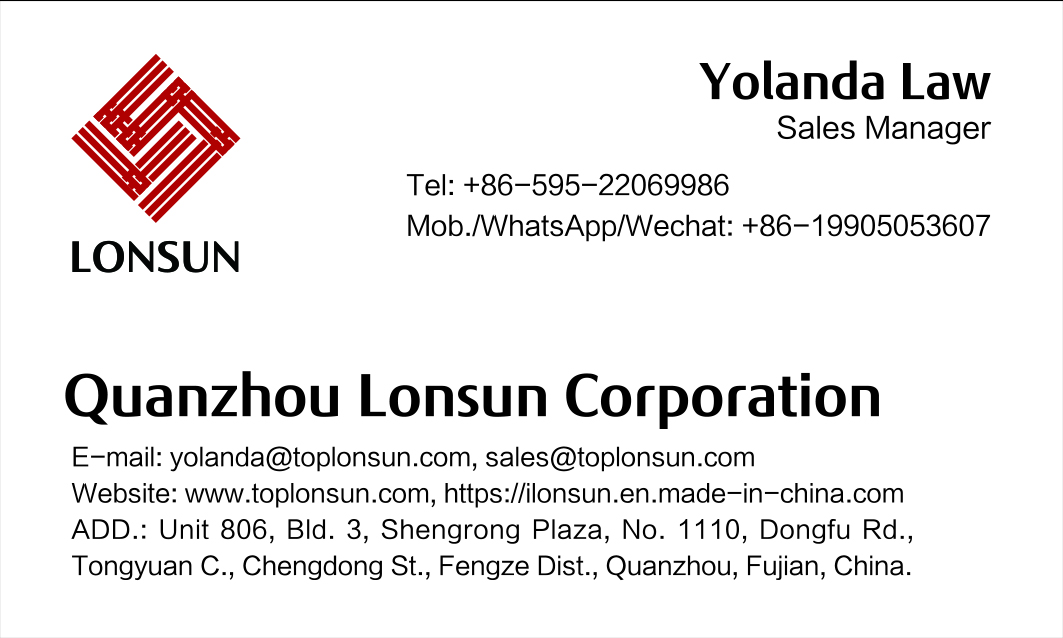Home
Home | About Us | Advantages | Blogs | Contact Us
- All
- Product Name
- Product Keyword
- Product Model
- Product Summary
- Product Description
- Multi Field Search
Home | About Us | Advantages | Blogs | Contact Us
| Availability: | |
|---|---|
| Quantity: | |
LS-WCZ
LONSUN
Airlaid paper is widely used in a number of industries. In the hygiene industry, airlaid paper is a raw material for the core of sanitary napkin production. LONSUN can supply 100% wood pulp airlaid paper.
 Advantages of Airlaid paper:
Advantages of Airlaid paper:
Excellent dust removal effect, with anti-static function;
Efficient water absorption;
Soft will not damage the surface of the object;
Provide sufficient dry and wet strength;
Low ion release;
Clean and hygienic, without any pollution.
Production of airlaid paper:
Chemical adhesive method: using 100% wood pulp fiber (fluff pulp) as raw material, the fibers in the single fiber
state are opened into a web by airflow, and the water-soluble adhesive is sprayed onto the surface of the fiber
mesh by spraying method, and then baked and reinforced into cloth. The main uses of the products are industrial
wipes, feminine hygiene products, baby wipes, table cloths, wet wipes and cooking cloths.







Airlaid paper is widely used in a number of industries. In the hygiene industry, airlaid paper is a raw material for the core of sanitary napkin production. LONSUN can supply 100% wood pulp airlaid paper.
 Advantages of Airlaid paper:
Advantages of Airlaid paper:
Excellent dust removal effect, with anti-static function;
Efficient water absorption;
Soft will not damage the surface of the object;
Provide sufficient dry and wet strength;
Low ion release;
Clean and hygienic, without any pollution.
Production of airlaid paper:
Chemical adhesive method: using 100% wood pulp fiber (fluff pulp) as raw material, the fibers in the single fiber
state are opened into a web by airflow, and the water-soluble adhesive is sprayed onto the surface of the fiber
mesh by spraying method, and then baked and reinforced into cloth. The main uses of the products are industrial
wipes, feminine hygiene products, baby wipes, table cloths, wet wipes and cooking cloths.







Global guide to start a diaper factory.
Discover Pakistan's top 10 diaper manufacturers in 2025, explore potential collaboration opportunities in the local diaper market, and get a professional recommendation for Lonsun – a reliable supplier of diaper raw materials. This article will help you grasp market players, evaluate business prospects, and connect with high-quality raw material resources efficiently.
2025 global top 10 sanitary pads
Check out the 2025 Diaper Material Guide. Learn how core components—advanced SAP, innovative backsheets, and functional non-wovens—boost absorbency and breathability in next-gen diapers.
Learn the key differences between pant-type diapers (pull-ups) and tape-type diapers (tape-on diapers) with our detailed guide. We help parents easily understand their unique features, benefits, and ideal use cases—so you can choose the most suitable diaper for your baby's needs.
Learn about the top 3 diaper manufacturers in 2025 and the future trends of the industry.
Wet wipes are an essential product used in households and industries worldwide. But have you ever wondered what they’re really made of? Understanding their composition is crucial for knowing how effective and safe they are.In this post, we’ll explore what wet wipes are made of, their benefits, and
Polyethylene (PE) and Polypropylene (PP) films are two widely used materials in the production of hygiene products such as diapers, sanitary napkins, and nursing pads. The selection of the right film material plays a crucial role in ensuring the performance, comfort, and durability of these products
Polyethylene (PE) film is an essential material in the manufacturing of hygiene products like diapers, sanitary napkins, and nursing pads. The density of PE film plays a significant role in determining the overall performance and quality of these products. From comfort to moisture control and durabi